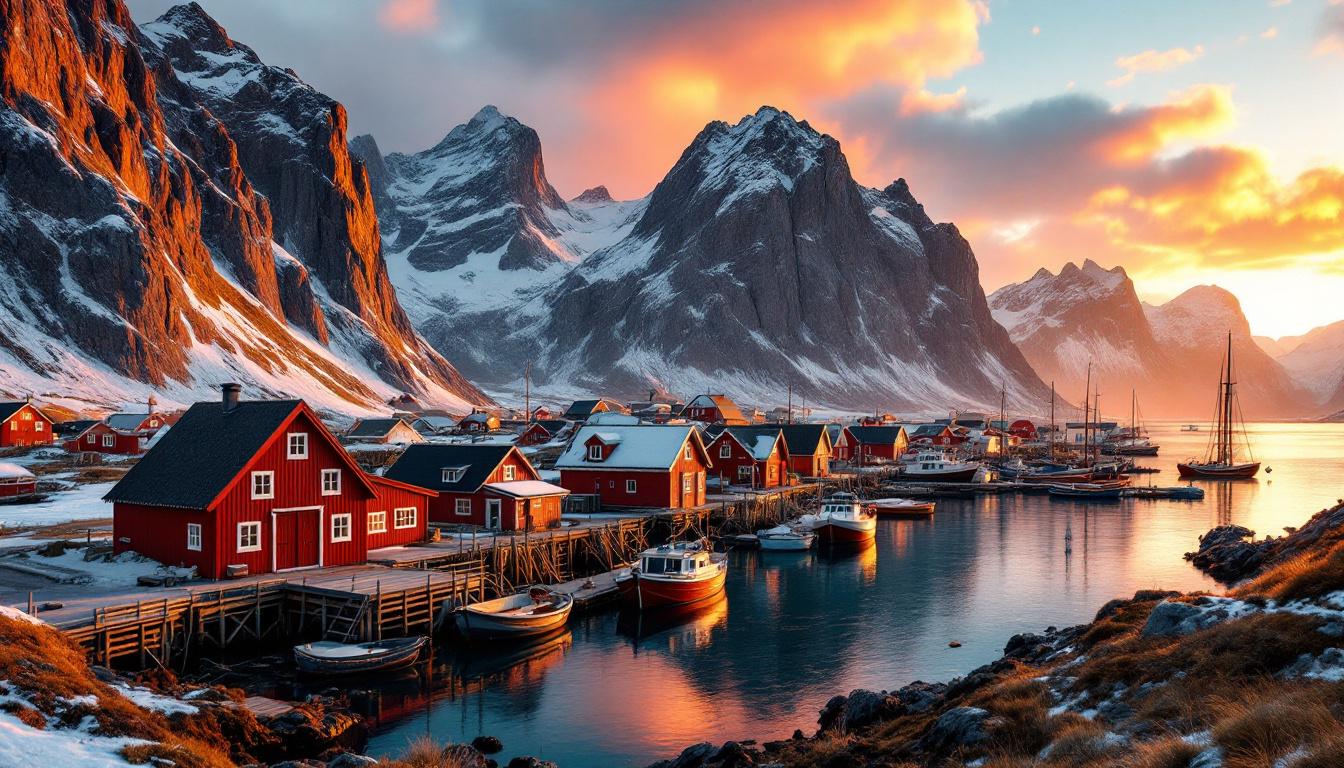Missing my connecting flight to Reykjavik should have ruined my Nordic adventure. Instead, it led me to Norway’s Lofoten Islands – a discovery that transformed my understanding of authentic Arctic travel forever.
What locals call “the real Nordic experience” sits 197 km north of the Arctic Circle, where 24,500 residents guard fishing traditions dating back to Viking times. This wasn’t the crowded Ring Road experience I’d planned – it was something infinitely more profound.
The moment I stepped off the ferry at Moskenes, I understood why seasoned Arctic travelers whisper about Lofoten with protective reverence. This was the Nordic destination Iceland used to be, before mass tourism changed everything.
The infrastructure advantage that changes everything
Superior roads and accessibility
Lofoten’s E10 highway revealed what Iceland’s Ring Road promises but rarely delivers – well-maintained asphalt connecting dramatic landscapes without the bone-jarring potholes or emergency detours that plague Iceland’s remote routes. Gas stations appear every 40 km, not every 150 km like Iceland’s barren stretches.
Compact exploration vs endless driving
The entire archipelago spans just 110 km end-to-end, allowing deep cultural immersion rather than Iceland’s exhausting 1,300 km circuit. I could hike Reinebringen at sunrise, explore Henningsvær’s galleries by afternoon, and still catch midnight photography in Å – impossible on Iceland’s time-consuming Ring Road.
The Gulf Stream climate revelation
Arctic warmth that defies expectations
July temperatures reaching 20°C (68°F) shocked me after Iceland’s chilly summer disappointments. The Gulf Stream creates a maritime climate where Arctic hiking feels Mediterranean – no wool layers required for coastal walks that would demand winter gear in Iceland.
Midnight sun without the cold
Lofoten’s midnight sun until July 19th comes with genuine warmth, unlike Iceland’s bright but frigid summer nights. I photographed fishing boats at 2 AM wearing just a light jacket – a comfort level impossible during Iceland’s bone-chilling “bright nights.”
Living Viking culture beyond museums
The Borg Viking Museum experience
Iceland’s scattered Viking sites pale beside Borg’s reconstructed longhouse – built on the actual footprint where a chieftain lived 1,000 years ago. I participated in traditional blacksmithing and mead ceremonies, experiencing Viking culture as living tradition, not tourist attraction.
Authentic fishing village traditions
Nusfjord and Henningsvær preserve working fishing culture Iceland’s tourist-focused villages have abandoned. I watched stockfish preparation using methods unchanged since Viking times, staying in traditional rorbuer cabins where fishermen actually lived – not sanitized replicas.
The cost and crowd advantages
Traditional accommodations that deliver value
Rorbuer cabins cost $150-200 per night for authentic fishermen’s quarters with full kitchens, compared to Iceland’s $300+ hotel rooms with basic amenities. Self-catering with local stockfish and cloudberries provided cultural immersion Iceland’s expensive restaurants never matched.
July timing for strategic advantages
Pre-August pricing saves 30% over peak season, while Iceland’s July crowds create parking nightmares at major attractions. Lofoten’s better infrastructure distributes visitors across multiple villages, eliminating the bottlenecks that plague Gullfoss or Seljalandsfoss.
Six months later, I realize that missed flight was travel destiny. Lofoten offers everything I sought in Iceland – dramatic Arctic landscapes, midnight sun, Nordic culture – but with superior infrastructure, warmer climate, and authentic experiences mass tourism hasn’t diluted.
The transformation wasn’t just scenic – it was cultural. Living among working fishing communities, participating in traditions spanning millennia, and exploring landscapes without fighting crowds restored my faith in authentic travel. This is what Nordic adventure looked like before Instagram discovered it.
Planning your authentic Nordic discovery
When should I visit Lofoten for the best experience?
July offers midnight sun until mid-month with warmest temperatures (10-20°C), making hiking and photography ideal. Book accommodations early as authentic rorbuer fill quickly during peak season.
How do I get to Lofoten from major airports?
Fly to Oslo, then Bodø or Evenes, followed by bus or ferry connections. The journey takes longer than Iceland flights but rewards with dramatic approach views impossible from Keflavik Airport.
What makes Lofoten more authentic than Iceland?
Living fishing culture versus tourist-focused villages, better infrastructure for independent exploration, and Gulf Stream climate enabling comfortable Arctic adventures year-round.
Are costs really lower than Iceland?
Rorbuer accommodations and self-catering options provide better value than Iceland’s expensive hotels, especially when booking traditional fishing cabins with full kitchen facilities.
How do I respect local culture in Lofoten?
Support family-run businesses, follow leave-no-trace principles on hiking trails, and engage respectfully with fishing communities – locals appreciate genuine interest in their maritime heritage.
